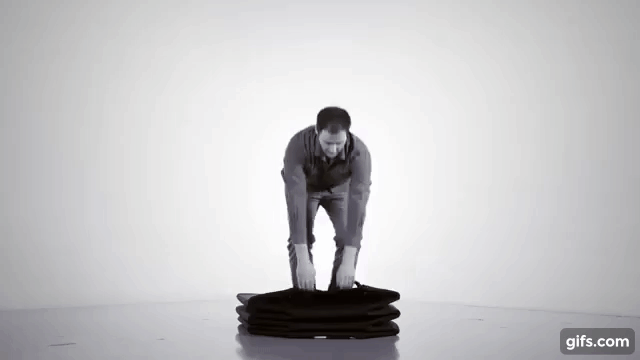MaXXXine
Mia Goth and Ti West took the world of arthouse horror by storm in 2022 with the one-two punch of “X” and “Pearl,” distinct and original films within a bold, new cinematic universe. “X” was a grisly homage to ‘70s slasher flicks, while the prequel, “Pearl,” was the duo’s twisted take on the Technicolor of Douglas Sirk. Both were rich in style and narrative verve, with a thrillingly unhinged Goth at the center, playing multiple parts. Now, we have the third part in the trilogy, “MaXXXine,” and it’s a crushing disappointment. The style remains firmly in place – this time, it’s a lurid look at Los Angeles in the mid-1980s – but there’s nothing underneath it. West, as writer and director, has lovingly recreated this period of conspicuous consumption for maximum grime and sleaze. Far from glamourous, his Hollywood alternates between neon-soaked nighttime streets and bland backlots by day, with the hypnotic drone of Tyler Bates’ synth score recalling the films of Mann and De Palma. The Night Stalker is on the loose, terrorizing innocent citizens who fear they’ll be his next victim. And conservatives are complaining that movies and music are going to turn America’s youth into Satanists. (Among the montage of period-specific news footage off the top is Twisted Sister lead singer Dee Snider testifying before the Senate about censorship.) Within this volatile mix is Goth’s Maxine Minx, whom we last saw fleeing the adult film set of “X” in 1979. Now it’s 1985, and she’s made her way to Hollywood, fueled by dreams of stardom and an unshakable sense of self. Porn shoots and peep shows have sufficed for a while, but she knows she’s destined for something greater. An opening sequence in which she auditions for a legitimate picture -– the horror sequel “The Puritan II” -- suggests she may be right. Working once again with cinematographer Eliot Rockett, West shoots Maxine in a long, single take as she struts onto a soundstage in skin-tight denim, silhouetted against the haze of the San Fernando Valley sun. As we learned from the first film in this trilogy, she has that X factor – and that’s precisely what makes “MaXXXine” so frustrating as it evolves. The core of the story is that various young women in Maxine’s orbit are being lured to their gory deaths. We know she’s not the killer, but a couple of LAPD detectives (Michelle Monaghan and Bobby Cannavale) are after her anyway to see if she can help them. So is a New Orleans private investigator hired by a sinister force from her past (Kevin Bacon in smoked aviators, doing a Foghorn Leghorn accent). Oddly, this combination of pressures turns Maxine into a reactive figure, which is not her (or Goth’s) strong suit. The very thing that made the character so captivating, both within this setting and the make-believe of movie acting, is her swagger, and the sense that she might do anything at any moment in the name of fame. “MaXXXine” strips her of that spark and renders her a passenger. This is especially clear in her many scenes with a commanding Elizabeth Debicki as the director of “The Puritan II,” who drives Maxine around the Warner Bros. lot in a golf cart, delivering soliloquies about art and her desire to make “a B-movie with A ideas.” Perhaps that’s what West is after, as well. But if he’s addressing the handwringing over pop culture as a destructive force, he’s not doing so in a particularly novel or insightful way. Goth remains a singular screen presence, but she can only do so much with a character who becomes less interesting as she finds herself drawn deeper into danger. As the film approaches its conclusion, “MaXXXine” oddly lacks tension and momentum. The revelation of the killer’s identity and motivation only raises more questions than it answers. And in depicting Hollywood as a cesspool of exploitation, West scatters myriad film references about without cohesion or meaning: a Buster Keaton look-alike, the “Psycho” house, “St. Elmo’s Fire” splashed across the marquee at the now-defunct Vine Theatre. (Although his use of the earworm John Parr theme song accompanies one of the film’s more startling moments of violence. The whole soundtrack is effectively eclectic, from ZZ Top to New Order to Frankie Goes to Hollywood.) Maybe the emptiness in exploring tawdry ‘80s culture is the point – that it was all surface, full of teased-up hair and giant shoulder pads. But an effing movie star like Mia Goth deserves more.


Mia Goth and Ti West took the world of arthouse horror by storm in 2022 with the one-two punch of “X” and “Pearl,” distinct and original films within a bold, new cinematic universe.
“X” was a grisly homage to ‘70s slasher flicks, while the prequel, “Pearl,” was the duo’s twisted take on the Technicolor of Douglas Sirk. Both were rich in style and narrative verve, with a thrillingly unhinged Goth at the center, playing multiple parts.
Now, we have the third part in the trilogy, “MaXXXine,” and it’s a crushing disappointment. The style remains firmly in place – this time, it’s a lurid look at Los Angeles in the mid-1980s – but there’s nothing underneath it. West, as writer and director, has lovingly recreated this period of conspicuous consumption for maximum grime and sleaze. Far from glamourous, his Hollywood alternates between neon-soaked nighttime streets and bland backlots by day, with the hypnotic drone of Tyler Bates’ synth score recalling the films of Mann and De Palma.
The Night Stalker is on the loose, terrorizing innocent citizens who fear they’ll be his next victim. And conservatives are complaining that movies and music are going to turn America’s youth into Satanists. (Among the montage of period-specific news footage off the top is Twisted Sister lead singer Dee Snider testifying before the Senate about censorship.)
Within this volatile mix is Goth’s Maxine Minx, whom we last saw fleeing the adult film set of “X” in 1979. Now it’s 1985, and she’s made her way to Hollywood, fueled by dreams of stardom and an unshakable sense of self. Porn shoots and peep shows have sufficed for a while, but she knows she’s destined for something greater. An opening sequence in which she auditions for a legitimate picture -– the horror sequel “The Puritan II” -- suggests she may be right. Working once again with cinematographer Eliot Rockett, West shoots Maxine in a long, single take as she struts onto a soundstage in skin-tight denim, silhouetted against the haze of the San Fernando Valley sun.
As we learned from the first film in this trilogy, she has that X factor – and that’s precisely what makes “MaXXXine” so frustrating as it evolves. The core of the story is that various young women in Maxine’s orbit are being lured to their gory deaths. We know she’s not the killer, but a couple of LAPD detectives (Michelle Monaghan and Bobby Cannavale) are after her anyway to see if she can help them. So is a New Orleans private investigator hired by a sinister force from her past (Kevin Bacon in smoked aviators, doing a Foghorn Leghorn accent).
Oddly, this combination of pressures turns Maxine into a reactive figure, which is not her (or Goth’s) strong suit. The very thing that made the character so captivating, both within this setting and the make-believe of movie acting, is her swagger, and the sense that she might do anything at any moment in the name of fame. “MaXXXine” strips her of that spark and renders her a passenger.
This is especially clear in her many scenes with a commanding Elizabeth Debicki as the director of “The Puritan II,” who drives Maxine around the Warner Bros. lot in a golf cart, delivering soliloquies about art and her desire to make “a B-movie with A ideas.” Perhaps that’s what West is after, as well. But if he’s addressing the handwringing over pop culture as a destructive force, he’s not doing so in a particularly novel or insightful way.
Goth remains a singular screen presence, but she can only do so much with a character who becomes less interesting as she finds herself drawn deeper into danger. As the film approaches its conclusion, “MaXXXine” oddly lacks tension and momentum. The revelation of the killer’s identity and motivation only raises more questions than it answers.
And in depicting Hollywood as a cesspool of exploitation, West scatters myriad film references about without cohesion or meaning: a Buster Keaton look-alike, the “Psycho” house, “St. Elmo’s Fire” splashed across the marquee at the now-defunct Vine Theatre. (Although his use of the earworm John Parr theme song accompanies one of the film’s more startling moments of violence. The whole soundtrack is effectively eclectic, from ZZ Top to New Order to Frankie Goes to Hollywood.)
Maybe the emptiness in exploring tawdry ‘80s culture is the point – that it was all surface, full of teased-up hair and giant shoulder pads. But an effing movie star like Mia Goth deserves more.




















